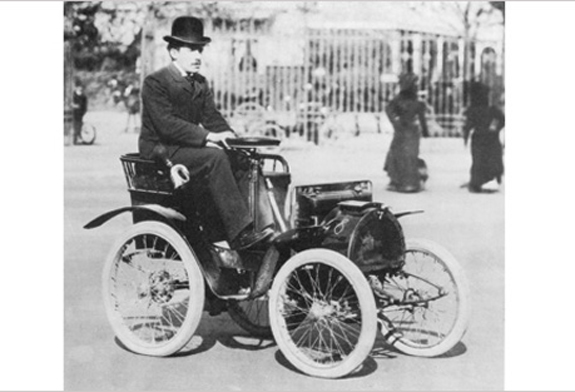A Look Back at Transmission Technology, and a Look to Where It’s Headed
Transmission technology is a growing and ever-changing phenomenon. One might think that something which has been around as long as the transmission just might have hit the ceiling on possible advances and improvements, but that would be wrong. Advances in transmission technology are still being made by car manufacturers today, in their never-ending quest for better performance and optimal gas mileage.
In fact, transmissions have developed steadily for well over a century. We’ll take a brief look at the history of both manual and automatic transmissions, and at what the future has in store.
Manual Transmissions
In the beginning of automobile development, all transmissions were manual; if you were going to drive you had to know how to use one, which could be a real chore in the early days. Two inventors in France, Emile Levassor and Louis-Rene Panhard, are generally given credit for developing the first manual transmission in 1894, although others were also working on the idea at the time. They created a three-speed transmission: two forward gears and one for reverse, with a chain drive. Their design is still the fundamental basis for manual transmissions today.
In 1898 Louis Renault adopted their idea, but used a drive shaft instead of a chain, as well as a differential axle.
Transmissions were non -synchronized until 1928, when Cadillac came out with the first synchronized manual transmission, which made them much easier to use.
Automatic Transmissions
Although the concept for an automatic transmission had been around as far back as 1904, it didn’t become reality until 1938 when General Motors introduced the Hydra-Matic, a clutch-less automatic transmission created by engineer Earl Thompson.
However, the first true fully automatic transmission didn’t come on the scene until 1948 with Buick’s Dynaflow. Post-war drivers loved the convenience of not having to shift gears, and it was quite popular in the Golden Age of automobiles.
In 1956 GM replaced the Hydra-Matic with the Jetaway transmission, but it proved to be unpopular, and was eventually replaced with the Turbo Hydra-Matic.
It can be said that the automatic transmission is responsible for the great surge in freedom and mobility that Americans enjoyed after WWII, and for the rise of suburbia.
The Future of Transmissions
As mentioned above, car manufacturers are always trying to build a better transmission, and the trend is to give them more gears. Both eight-speed and nine-speed transmissions have come on the scene in recent years. Chrysler, BMW, Audi, and Jaguar all offer models using these new transmissions.
Not to be outdone, both Ford and General Motors have developed nine-speed and ten-speed automatic transmissions. A ten-speed transmission will be available on the 2017 Chevy Camaro ZL1. And Ford recently filed a patent for an eleven-speed transmission.
Significant increases in fuel economy and in performance have been the result of these new innovations.
It’s been estimated that only about ten percent of cars in the U.S. have manual transmissions these days. Some will mourn their passing, but the future of transmissions still looks bright.
No matter which transmission you prefer, it’s important to remember to keep it properly maintained to get as much life out of it as possible.
































